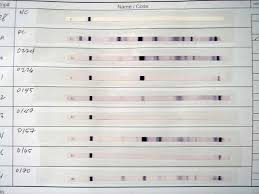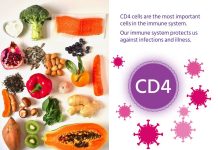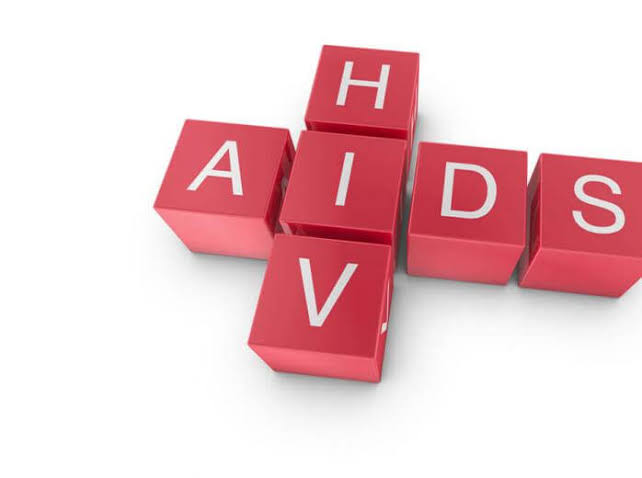What does HIV test entail?
The diagnosis of HIV has traditionally been made by detecting antibiotics against HIV. Since the first HIV antibody tests became commercially available, there has been rapid evolution in HIV detection technology. In addition to a method of assay called ELISA, newer rapid band simple tests are available which are comparable to ELISA on sensitivity and specificity. These methods are easy to perform in limited resource settings like primary health care centres and are more cost effective than ELISA. As the success of counselling and testing strategy largely depends on the availability of cheap testing facilities and give results in the shortest possible time, the rapid tests are attractive options where the client can be subjected to a pre-testing counselling, test result and post-test counselling in one session.

A Western Blot for confirming HIV tests.
Credit: Wikimedia
The following strategies are suggested for testing:
strategy I of HIV test
This involves carrying out one ELISA/Rapid/Simple (ERS) test and it is not recommended for diagnosis of HIV infection in a person. It is limited to HIV test in blood banks where the blood units are screened for HIV.
strategy II
The blood is tested for HIV antibodies with 2 tests conducted with ERS with different antigen preparations or different principles. The tests may be 2 rapid tests or 2 ELISA or a combination of rapid and simple and ELISA but no two tests should be of one kind of antigen or principle. This ensures a better reliability of the tests. Two tests are undertaken when the person is symptomatic with any one of the underlying AIDS defining illnesses.
READ ALSO HIV TESTING AND COUNSELLING CENTRES
strategy III
The blood is tested for HIV antibodies with 3 tests conducted with ERS with different antigen preparations or different principles. The tests may be 3 rapid tests or 3 ELISA or a combination of rapid and simple and ELISA but no 3 tests should be of one kind of antigen or principle. The 3 tests are used for asymptomatic persons who have suspicion of HIV infection.
When is somebody declared to have HIV?
The test result is either negative, positive or indeterminate. A negative test result implies that HIV antibodies are not detected in the blood. This is an indication that the person is either not infected or the person is still in the “window period” (a period when the person has been infected so recently that the immune system has not yet produced antibodies). A negative result does not mean that somebody is immune to HIV infection as the person can still be infected if she/he is exposed to HIV. A positive result signifies that HIV antibodies were detected in the blood. This means that the person is infected with HIV. A positive result does not necessarily mean the person has AIDS. An indeterminate test result means that the presence or absence of HIV antibodies could not be confirmed. This could mean that the person is in the “window period”, has a prior vaccination that is cross-linking with the HIV antibody test, or has an existing medical condition that is affecting the test.
In counselling and testing centres, the following procedures are often practised before you can be declared positive:
- The blood (serum) is first tested with one method called ELISA or simple/rapid assay.
- If the first test shows positive sign of HIV, the blood sample is re-tested using a different method.
- If the second test shows positive sign of HIV, the blood sample is repeated for the third test.
- The blood showing positive signs of HIV in all three tests is considered HIV antibody positive.
- Blood samples that remain discordant in the in the second assay or show positive sign of HIV on the first and second tests but nosign on the the third test are considered to be indeterminate. In such cases, the person is asked to report for a re-test after a minimum period of 2 weeks and if still indeterminate may be subjected to another type of test before confirmation. This may involve using a test method called Western Blot or Line Immunoassay. In some cases the person may be followed up for 3, 6 or 9 months.
source
READ MORE ON HIV FROM Aidsinfo.nih.org
























